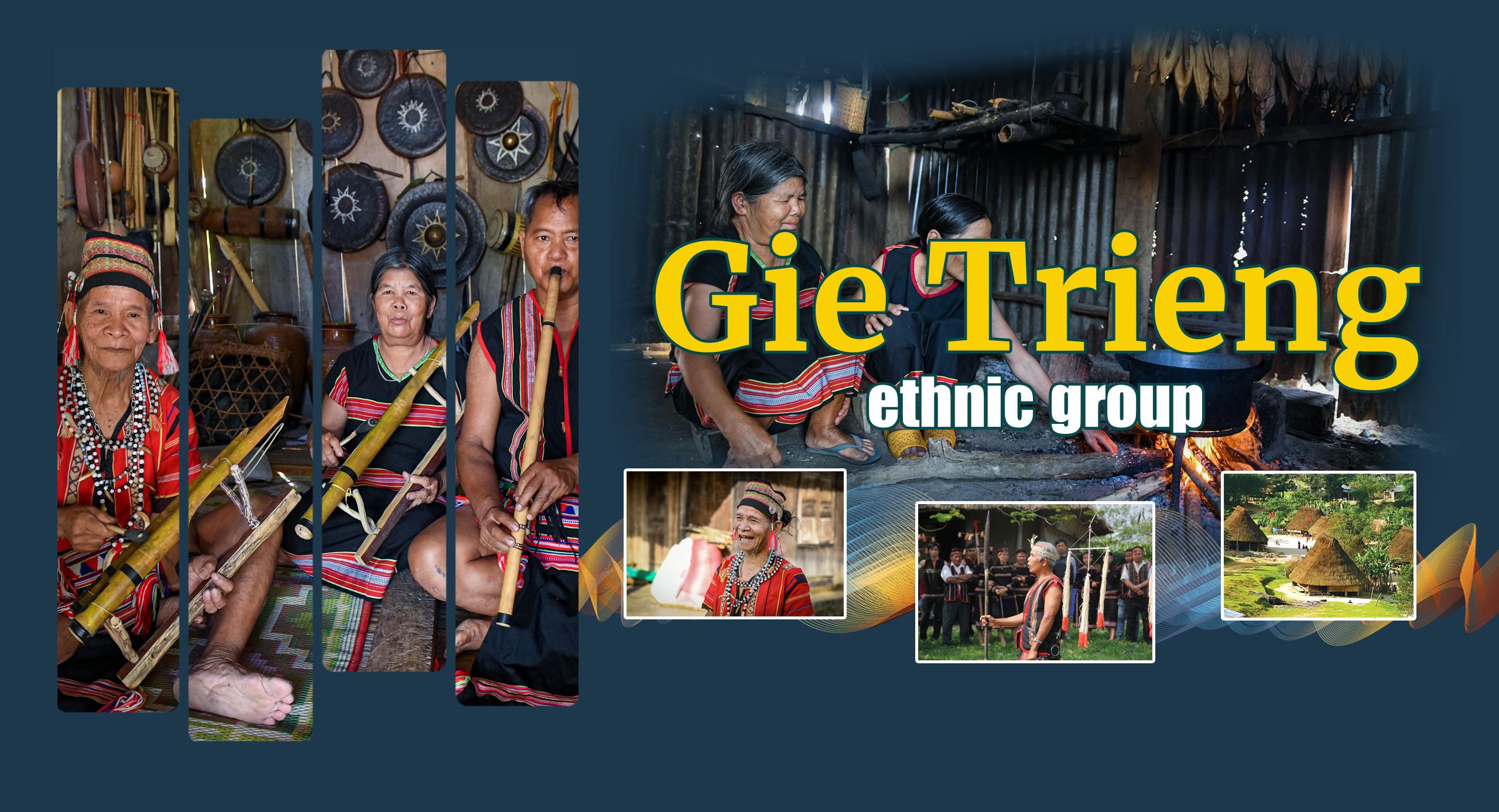
Other names: Catang, Doan, Xop, Brila (in Dak Glei District, Kon Tum Province) and Monoong or Ponoong (in Quang Nam Province).
Language: The language of the Gie Trieng people belongs to the Mon-Khmer language system (the language family of Southern Asia) and is relatively close to the Xo Dang and Ba Na languages.
Residence: The Gie Trieng people reside mainly in the two provinces of Kon Tum and Quang Nam.
History: Research on the history of the Gie Trieng people in Vietnam shows that this ethnic group originated from Laos. But the ancestors of the Gie Trieng have lived for a long time in the area around the Ngoc Linh Mountain range, residing mainly in the two provinces of Kon Tum and Quang Nam. In addition to the name Gie Trieng, this ethnic group also bears other names such as Catang, Doan, Xop, Brila (in Dak Glei District, Kon Tum Province) and Monoong or Ponoong (in Quang Nam Province).
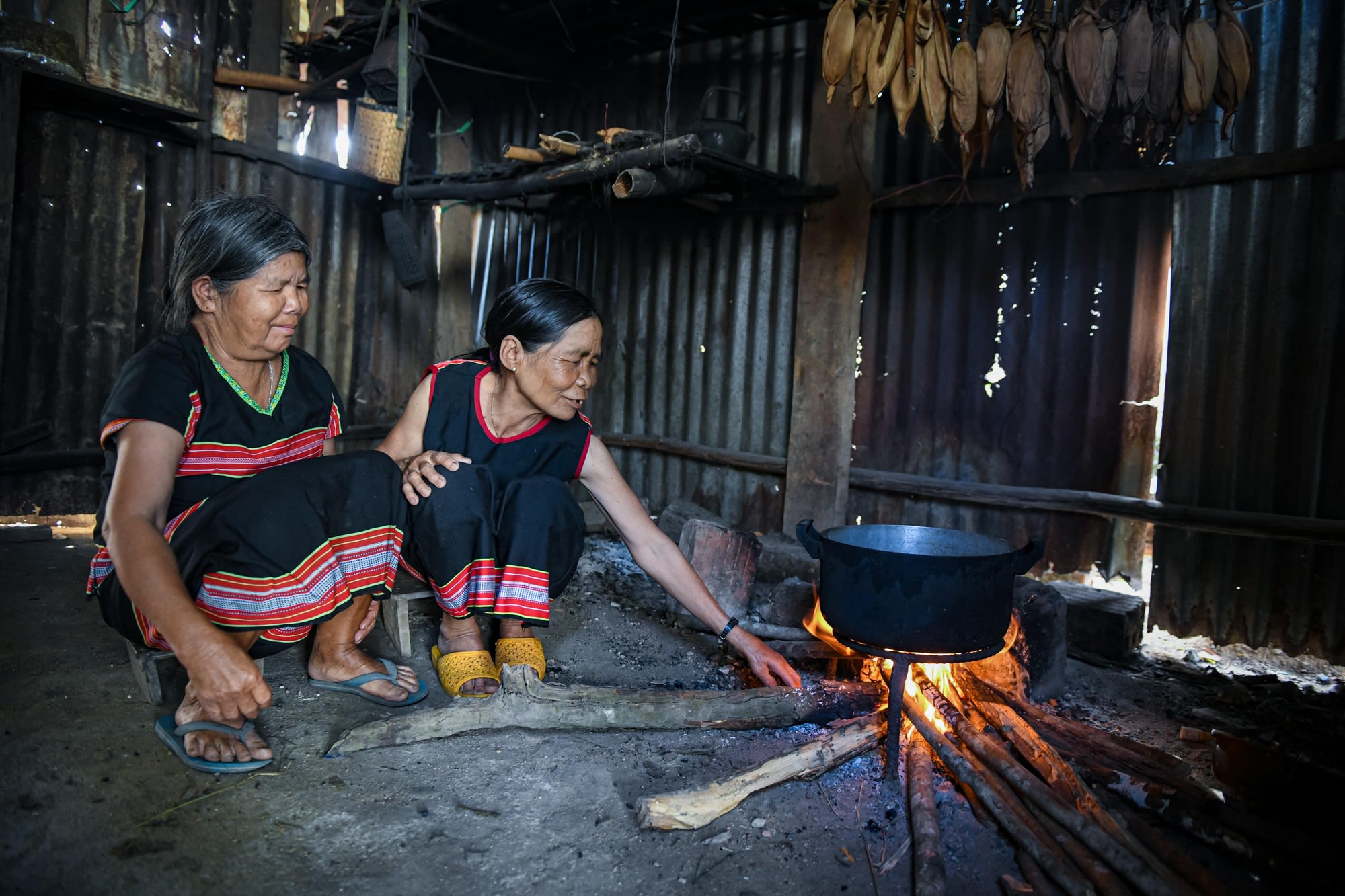
Gie Trieng ethnic group
The Gie Trieng people have always attached themselves to the Ngoc Linh Mountain range and have made many contributions to exploring, building, protecting, and developing this land, while still preserving many traditional cultural identities.
1. History
Research on the history of the Gie Trieng people in Vietnam shows that this ethnic group originated from Laos. But the ancestors of the Gie Trieng have lived in the area around the Ngoc Linh Mountain range for a long time, residing mainly in the two provinces of Kon Tum and Quang Nam. In addition to the name Gie Trieng, this ethnic group also bears other names such as Catang, Doan, Xop, Brila (in Dak Glei District, Kon Tum Province) and Monoong or Ponoong (in Quang Nam Province).
The Gie Trieng ethnic group consists of many subgroups such as Gie, Trieng, Ve, Bhnoong incorporated.
2. Geographical distribution
The Gie Trieng people reside mainly in the two provinces of Kon Tum and Quang Nam.
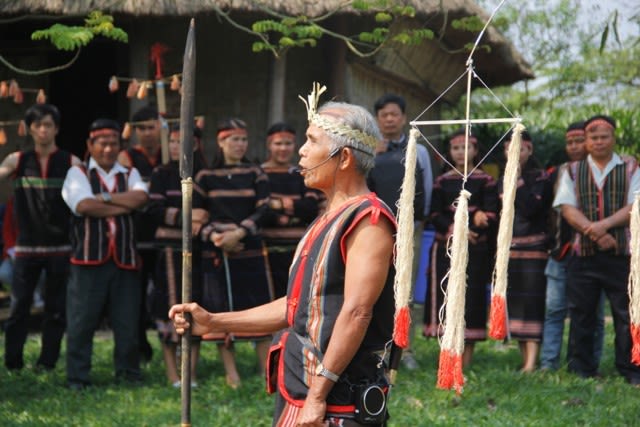
A Gie Trieng village elder.
A Gie Trieng village elder.
3. Population, language
- Population: According to a survey of 53 ethnic minority groups, as of April 1, 2019, there are 63,322 Gie Trieng ethnic people in Vietnam, including 31,152 men and 32,170 women. The average household consists of 3.8 people. 91.1% of the population live in rural areas.
- Language: The language of the Gie Trieng people belongs to the Mon-Khmer language system (the language family of Southern Asia) and is relatively close to the Xo Dang and Ba Na languages. In the period before 1975, the Gie Trieng people had a script with a rhyme structure based on Latin letters.
4. Main features
- Traditional social institutions: Gie Trieng people live in villages. The head of the village is the village elder, who is knowledgeable about the customs and practices and has the highest reputation among the villagers. The village elder is also the final decision maker in the village meetings. In addition to the village elder, the village also has a Council of Elders consisting of the owners, elders of the families, and military commanders.
In each village of the Gie Trieng people, it is mandatory to have a smithy and a public hammer. Each village consists of many houses, where the Gie Trieng families live, arranged along the village roads.
- Marriage: According to the tradition of Gie Trieng people, when boys reach 10 years old, they start spending the night in community houses, and after a few years, they will get married. Parents in the Gie Trieng families respect their children's marriage choices.
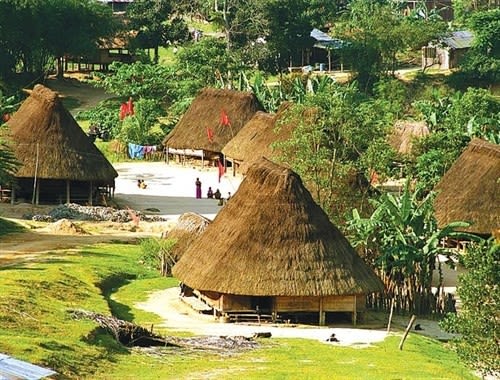
Traditional house of Gie Trieng people. (Photo: 'Dan Toc va Mien Nui' pictorial magazine)
Traditional house of Gie Trieng people. (Photo: 'Dan Toc va Mien Nui' pictorial magazine)
- Housing: Gie Trieng people live on long stilts and small stilts. In addition, they have public houses for men and women and temporary shelters for women giving birth. Currently, the Gie Trieng people still use long rectangular or circular ground-floor houses surrounding the public house in the middle of the village.
- Costumes: Gie Trieng men often wear loincloths and have long or short hair. In the cold season, they also wear woven robes and white scarves. Gie Trieng women wear many different types of dresses, with their own names, patterns, and meanings. Both men and women of the Gie Trieng people like to wear a lot of jewellery.
- Religion and belief: The Gie Trieng people follow polytheistic beliefs, but they do not yet have a separate concept to distinguish between gods and demons. In addition to the rituals of each family, every few years the whole village organises a ceremony to pray for peace and give thanks to the gods.
Besides the above-mentioned forms of belief, the Gie Trieng ethnic group also has forms of magic in healing, economic activities, associated with rituals and "sacred objects".
- Cuisine: Gie Trieng people mainly eat plain rice, glutinous rice, corn, potatoes, cassava and products from cultivation, husbandry, hunting and gathering such as birds, wild boar, deer, mink, eggplant, squash. The people used to have a habit of using their fingers to pick up food, but now they have switched to using chopsticks and bowls more. Both men and women smoke with pipes.
- Musical Instruments: The most important musical instrument of the Gie Trieng people is the gong. Sometimes people play gongs with drums and bamboo tubes. The bamboo tube is also a popular musical instrument for blowing, flapping, and knocking out sounds.

Gie-Trieng woman by the fire. (Photo: Thanh Dat)
Gie-Trieng woman by the fire. (Photo: Thanh Dat)
- Education: According to census data of 53 ethnic minorities from April 1, 2019, the rate of people aged 15 years and older who can read and write is 77.6%. The proportion of people at the primary level is 100.2%, people at lower secondary schools is 90.5%, and people at high school is 54.2%. Meanwhile, the rate of out-of-school children is 13.4%.
- Festivals: When worshiping, all Gie Trieng people offer sacrifices, but the blood of the sacrificial animal is the most important. The sacrifice of buffaloes is an important ritual ceremony. In the past, there was a place where people had to sacrifice with human blood in a special ritual ceremony related to the rice god. In the annual production cycle, there is usually ritual ceremonies such as choosing upland, clearing the fields, sowing, praying for good weather, beginning of threshing, bringing rice to the warehouse, and harvesting 100 bags of rice or more.
Rituals are also associated with the human life cycle, Gie Trieng people also perform rituals during pregnancy, during and after giving birth, in naming, in sickness, in sawing teeth, in marriage, in death. The Gie Trieng people usually welcome the new year earlier than the Kinh people's Lunar New Year, organised by village.
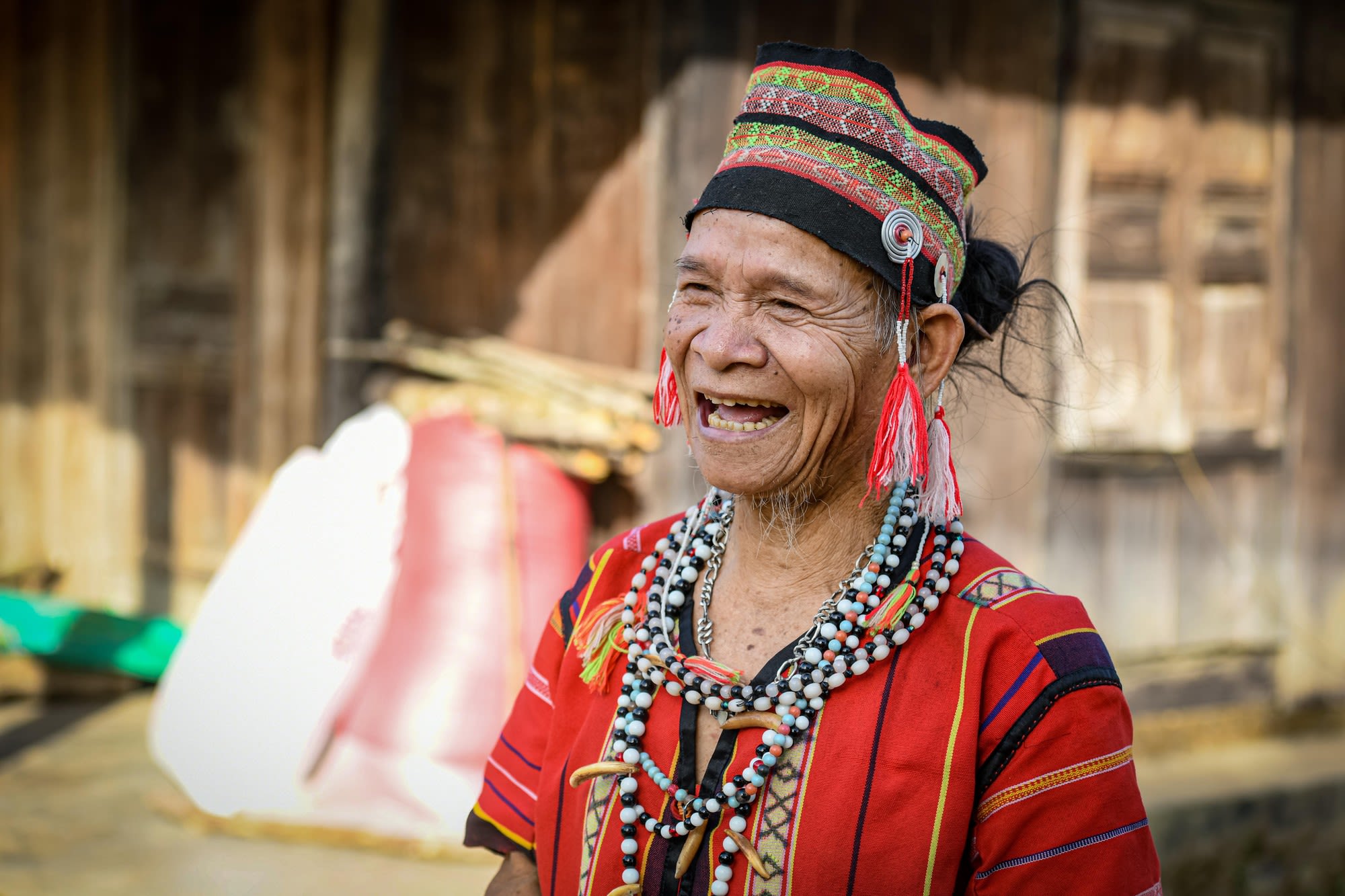
Gie Trieng man. (Photo: Thanh Dat)
Gie Trieng man. (Photo: Thanh Dat)
5. Economic conditions
The Gie Trieng people lives mainly on the cultivation of the land. In the past, they planted glutinous rice mainly, but today they grow a lot of plain rice, with a simple farming method. In addition to cultivating agricultural products such as corn, potatoes, cassava, the Gie Trieng people also raise chickens, pigs, buffaloes, and dogs for sacrifice. The Gie Trieng people also have a knack for knitting, weaving, and pottery at the elementary level. In the process of exchanging goods, the Gie Trieng people know how to use money as an object of exchange.
According to the results of the 2019 census on ethnic minority groups, as of April 1, 2019, the unemployment rate among Gie Trieng stands at 1.7%, the proportion of trained workers with diplomas and certificates at 9.8%, the proportion of labourers working in the non-agricultural sector at 11.2%, and the proportion of employees working as managers and having high and medium-level technical expertise at 4.4%. The rate of poor households is 27.7%, the proportion of near-poor households is 10.4%, the percentage of households using clean water sources is 74.7%, and the percentage of households using grid electricity for lighting is 98.6%.